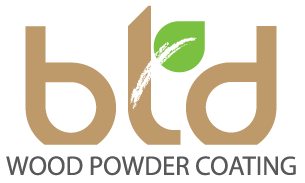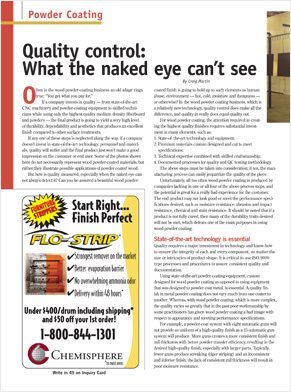Featured in Finishing magazine. Written by: Craig Martin, President, BTD Wood Powder Coating
Often in the wood powder-coating business an old adage rings true: “You get what you pay for.”
If a company invests in quality — from state-of-the-art CNC machinery and powder-coating equipment to skilled technicians while using only the highest quality medium density fiberboard and powders — the final product is going to yield a very high level of durability, dependability and aesthetics that produces an excellent finish compared to other surface treatments.
If any one of these steps is neglected along the way, if a company doesn’t invest in state-of-the-art technology, personnel and materials, quality will suffer and the final product just won’t make a good impression on the customer or end user. Some of the photos shown here do not necessarily represent wood powder-coated materials, but rather they illustrate possible BTD Featured in Finishing Magazine applications of powder coated wood.
But how is quality measured, especially when the naked eye cannot always detect it? Can you be assured a beautiful wood powdercoated finish is going to hold up to such elements as human abuse, environment — hot, cold, moisture and dampness — or otherwise? In the wood powder-coating business, which is a relatively new technology, quality control does make all the difference, and quality in really does equal quality out. For wood powder coating, the attention required in creating the highest quality finishes requires substantial investment in many elements, such as:
- State-of-the-art technology and equipment
- Premium materials custom designed and cut to meet specifications
- Technical expertise combined with skilled craftsmanship
- Documented processes for quality and QC testing methodology
The above steps must be taken into consideration; if not, the manufacturing process can easily jeopardize the quality of the piece.
Unfortunately, all too often wood powder coating is produced by companies lacking in one or all four of the above process steps, and the potential is great for a really bad experience for the customer. The end product may not look good or meet the performance specifications desired, such as moisture resistance, abrasion and impact resistance, chemical and stain resistance. It should be noted that if a product is not fully cured, then many of the durability traits desired will not be met, which defeats one of the main purposes in using wood powder coating.
State-of-the-art technology is essential
Quality requires a major investment in technology and know-how to ensure the integrity of each and every component, no matter the size or intricacies of product shape. It is critical to use ISO 9000 type processes and procedures to assure consistent quality and documentation.
Using state-of-the-art powder-coating equipment, custom designed for wood powder coating as opposed to using equipment that was designed to powder coat metal, is essential. A quality finish in metal powder coating does not vary much from one coater to another. Whereas, with wood powder coating, which is more complex, the quality varies so greatly that in the past poor workmanship by some practitioners has given wood powder coating a bad image with respect to appearance and meeting performance specifications.
For example, a powder-coat system with eight automatic guns will not provide as uniform of a high-quality finish as a 15-automatic gun system will produce. More guns creates a more consistent finish and mil thickness with better powder transfer efficiency, resulting in the desired high-quality finish, especially with larger parts. Typically, fewer guns produce streaking (tiger striping) and an inconsistent and inferior finish; the lack of consistent mil thickness will result in poor moisture resistance.
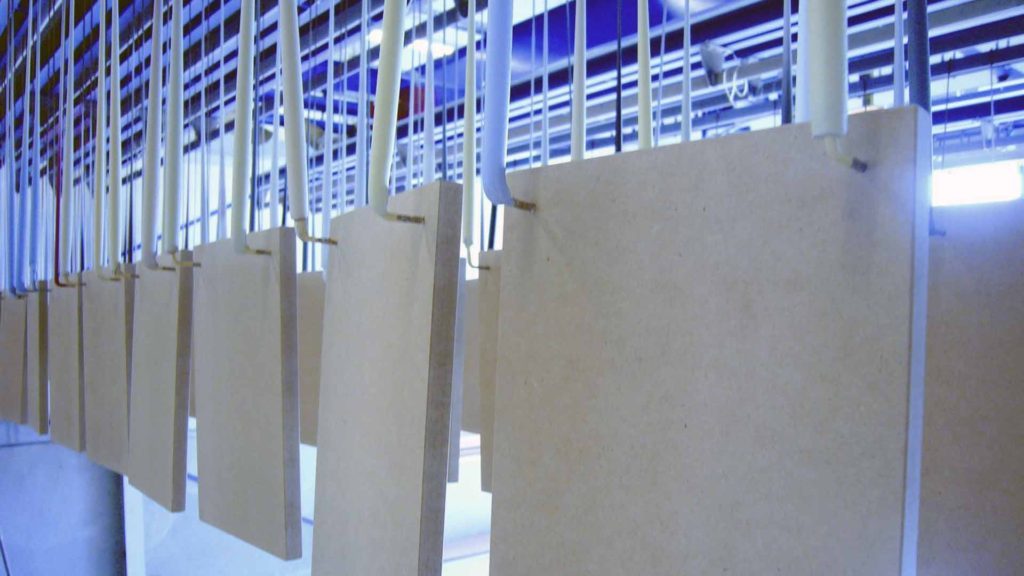
Powder application systems should have the ability to reclaim powder for maximum cost efficiencies, and quick color change in the manufacturing process saves time and money. It is imperative the powder system is in an environmental room to control temperature, humidity and contamination from dust and dirt. As the parts move along the conveyor system right after the final cure oven, it is important to have a cool-down room to reduce board temperatures for final packaging and a higher quality finish.
Finally, a critical process step is to have the proper wood CNC equipment for machining parts, as board preparation is essential to a great finish. It is also important to coat the parts within a short period after the machining process because of the porous nature of MDF when cut — it will actually start drying out the cut pieces.
Premium powders and MDF
It is important to use the premium quality resins and powders that are custom formulated to the desired performance specifications such as moisture resistance, abrasion and impact resistance, chemical and stain resistance, color and finish matches, and UV protection. Certainly not all powders have the same performance characteristics, so it is important to work with an expert to best meet the customer’s needs. Different powder formulations produce different results, whether it’s a textured, gloss or smooth finish and custom colors including PMS/RAL colors, multicolored powders, veined, granites or just custom formulated to match color swatches.
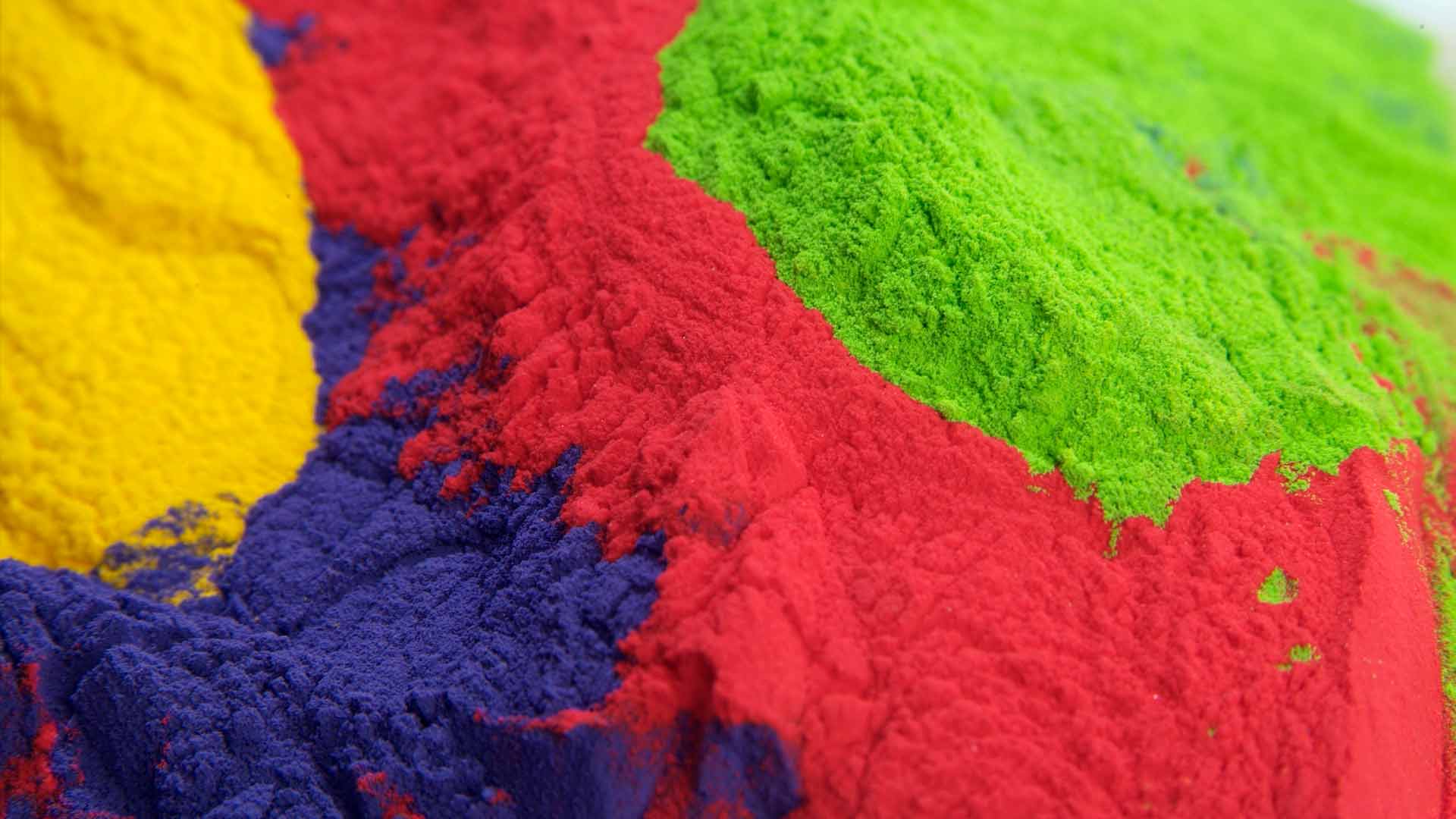
The quality of MDF varies greatly, and it is essential in the process chain along with powder choice. It is critical to use only one of the top two brands on the market. This premium grade MDF is specially formulated for wood powder coating to ensure proper moisture content, density and minimize fuzzy surfaces after CNC cutting. It also offers the benefit of being very green friendly with 100 percent recycled content. Plus, it is currently being reformulated, so in the future there will be no formaldehyde additives.
Marriage of craftsmanship and technicians
Quality is only as good as the people who control the process. Although much of the wood powder-coating process is automated, the finished product is really in the hands of the experts who cut and prep the MDF and the technicians who control the powder application technology. Training is imperative so that each member of the team understands the wood-coating process and their role in creating a quality finished product.
It is a marriage between the old world skilled craftsmanship of the past with the computer technology of the future — this process joins these two very different approaches into one.
Performance specifications and testing for quality
Wood powder coating has its subtleties, which only experts working with this technology will understand. While streaking, blotchiness and roughness are obvious to the layman, other predicators of quality are not visually seen with the naked eye.
It is important to use the proper powder formulations while using resins such as: epoxy, polyester, acrylics and various combinations with each custom formulation designed to meet the unique performance characteristics desired. Testing for quality is tied directly into the customer’s specifications in the powder formulations used. It is crucial to formulate the powder application individually for each specific application, then manufacture to the highest quality level to meet those specifications and customer satisfaction.
1. Visual inspection: This is typically done to meet different customer requirements given that some customers prefer flawless perfection and others require from a distance of an arm’s length to see few, if any, imperfections. There is a wide range of criteria ranging from specs, size of specs, number of specs per square feet, blemishes, etc. It is important that all parties clearly understand the expectations so there are no misunderstandings and defects can be pulled from production runs.
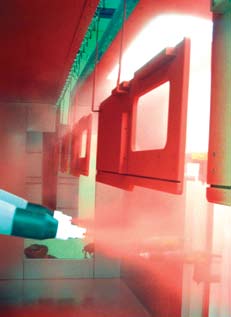
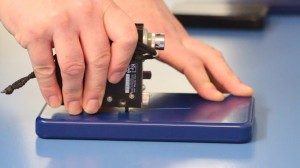
2. Mil thickness: Mil thickness is the ultimate test for quality and durability since MDF can be less stable and more difficult to control when compared to metal; therefore, an even mil thickness application is critical. For optimal results the thickness should range between 3 to 9 mil, depending on surface. Typically the thicker the mil coverage, the more durable the finish, so on horizontal countertop surfaces we apply thicker mil coverage for greatest durability. Mil thickness should always be within ±1, and this level can’t be determined just by looking at it; so it is important to use the right equipment, fine-tuned processes and testing methods and procedures. At BTD Wood Powder Coating, we randomly pull sample parts (based on a percentage of plant production) and test mil thickness with a Tooke gauge, ensuring that powder application meets manufacturing specifications.
3. MEK Rub Test: Surfaces are subjected to 50 double rubs to guarantee that the powder has been fully cured and won’t rub off. The MEK Rub Test checks for curing there should be little transfer of color to the swab tip; if there is, the powder is probably not fully cured. A properly cured finish also ensures the surface’s resistance to abrasion, water and chemicals. For the best results, use an applicator with a wooden shaft as MEK will deteriorate plastic and paper shafts rapidly.
4. Moisture resistance: This test can range from a quarter size drop of water left on a part for 24 hours to total part submersion in water for an extended period of time. Plus, there are moisture and temperature chambers for conduct testing the combination of hot/cold with humidity.
5. Chemical and stain resistance: This consists of exposing production samples to various chemicals and products, such as mustard, grape juice, etc. for a period of time to determine the powder and applications ability to meet the customer’s determined specifications.
6. Impact and abrasion resistance testing: This testing is usually performed using testing methods and devices called Taber Abrasion, Pencil Hardness and Hoffman Scratch Resistance. It sounds quite basic, but the hammer test provides a good test of the powder’s adhesion and the surface’s durability. If a hammer blow chips the surface, then adhesion is obviously poor and the finish is of very low quality.
7. Adhesion test: Although a high-quality wood powder-coated surface will resist scratching and cutting, surface adhesion can be tested by cutting crosshatches (using industrial cutters) into the finish. A strong adhesive tape is applied to the cross hatch cut into the surface with a razor blade, then pulled. The adhesion of the coating is rated on its ability to resist removal from the substrate. Ideally, there should be no visible signs of the paint on the tape, and the wood should pull off with Taber test unit to test abrasion resistance the paint on the tape.
8. Water resistance test: A basic water resistance test ensures the end product is capable of withstanding moisture, especially important for components used for desks and cabinetry. One of my favorite trade show tests is submerging powder coated component parts in water for several days, without any damage.
9. Gloss readings: This test is performed to make sure the powder is performing to manufacturing standards as well as meeting customers’ needs. This test should be conducted using a 60-degree gloss meter.
10. Colors: Just because it’s new doesn’t necessarily mean it’s improved. Test new colors for durability before committing to a customer. This should be conducted using a SpectraLight Color Viewing Booth and a production part, not just a sample part from the powder supplier. Also, remember that cheap powder pricing is not always the best option. How far the powder sprays per pound, a determination made from the specific gravity of each powder, is also important.
11. ASTM tests: The American National Standards Institute has many other tests that can be performed to determine quality and performance requirements, such as UV testing, shrinkage and heat resistance.
Summary
It is important to point out that wood powder coating is a complex process as compared to metal powder coating. There is a wide spread misconception that powder coating on metal is the same as wood. The similarities are there is a substrate and powder, and the process involves electrostatic adherence. Metal is a natural conductor of electricity, and wood is not. Powder formulations and shelf life differ greatly from metal to wood. For highest quality wood powder coating, excellent results are obtained using premium quality raw materials, and having the technical expertise and craftsmanship and a well documented quality control process commitment. This commitment to success requires millions of dollars and years of time and testing to provide what can be the finest quality and durable finish available in the wood manufacturing industry. When it comes to ensuring quality, it’s really a matter of buyer beware. Ensure that quality controls are in place so that you receive a quality and long-lasting product.
